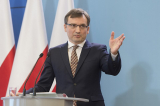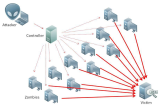
Today, in response to the European Council tasking at the Versailles Summit, the Commission and the High Representative present an analysis of the defence
investment gaps, and propose further measures and actions necessary to strengthen the European defence industrial and technological base. Russia's unprovoked aggression against Ukraine has significant implications for European defence, which is leading to increased military spending by Member States. With today's Joint Communication, the Commission and the High Representative aim to help Member States to invest together, better and in a European way. It also responds to the call made in the context of the Conference of the Future of Europe for stronger EU action in defence.
This Joint Communication presents a new level of ambition to build a stronger Europe in defence. It focuses in particular on the joint acquisition of military equipment, on strategic defence programming to set clearer priorities, and on the support to the European industrial base, including the strengthening of the European defence R&D framework, the European Defence Fund (EDF). EU initiatives to foster defence cooperation also help reinforce a fairer Transatlantic burden-sharing and a more effective European contribution within NATO.
Defence investment gaps
Taking into account the analysis of investment gaps carried out by the European Defence Agency, the Commission and the High Representative examine three main types of gaps: defence expenditure, defence industrial gaps, and defence capability gaps.
- Defence expenditure: As a direct result to the Russian invasion of Ukraine, Member States have already announced increases in their defence budgets close to an additional €200 billion in the coming years. Whilst these increases are essential, they come after years of substantial cuts and severe underinvestment. From 1999 to 2021, EU combined defence spending increased by 20% against 66% for the US, 292% for Russia and 592% for China. Without a coordinated approach, the increase in spending risks leading to further fragmentation and undo progress made until now.
- Defence industrial gaps: Despite the overall competitiveness of the sector, difficulties and gaps exist. Since demand is fragmented, the industry also remains structured along national borders, especially outside the aeronautics and missile sectors. Dependencies also exist for some key defence equipment for which the European defence industrial and technological base is not offering indigenous solutions.
- Capability gaps: three urgent priorities have been highlighted: replenishing stockpiles, replacing Soviet-era legacy systems and reinforcing air and missile defence systems. Beyond these urgent capability gaps, the Joint Communication proposes to work on a number of specific strategic medium- to long-term capabilities in the air, land, maritime, space and cyber defence domains.
Measures to address these gaps
In order to support the closing of the gaps, the Commission and the High Representative set out a set of very concrete measures designed to strengthen European defence demand through joint procurement and to reinforce supply through measures targeting the support to industrial manufacturing capacities.
In the immediate term, the Commission and the High Representative/Head of the European Defence Agency will swiftly establish a Defence Joint Procurement Task Force to work with Member States to support the coordination and de-conflict their very short term procurement needs to face the new security situation. The Task Force will also coordinate with the Clearing House Cell set up within the EEAS/EU Military Staff to facilitate coordination on military assistance to Ukraine.
A short-term EU instrument to reinforce defence industrial capabilities through joint procurement will be proposed for fast-track adoption, to support Member States to fill the most urgent and critical gaps in a collaborative way, based on the work of the Task Force. The Commission is ready to commit €500m of EU budget over two years to incentivise Member States to address these needs in a collaborative way.
This short-term instrument will pave the way to an EU framework for defence joint procurement. To this end, in the third quarter of 2022, the Commission will propose a European Defence Investment Programme (EDIP) regulation. It will establish the conditions for Member States to form European Defence Capability Consortia (EDCC). Within an EDCC, Member States will jointly procure, for the use of participating Member States, defence capabilities that are developed in a collaborative way within the EU and will benefit from a VAT exemption. Additionally, associated EU financing may be provided for projects of high EU interest.
The support to joint procurement complements and completes the efforts made until now on defence R&D through the EDF.
Additionally, the Commission and the High Representative propose to progressively move towards a joint EU defence programming and procurement function allowing to define better the capabilities priorities to focus on.
Finally, enhanced European defence cooperation also requires a solid action plan to reinforce the European defence industrial capacity. To this end, the Commission will:
- Carry out, in cooperation with the European Defence Agency, an in-depth mapping of EU current and necessary additional industrial manufacturing capabilities;
- Propose a Critical Raw Materials initiative, including legislative measures, to facilitate, inter alia, defence industry access to Critical Raw Materials (CRMs), thereby strengthening the EU‘s resilience and security of supply;
- Work on further measures to ensure the availability of defence specific skills for the industrial capacity ramp-up;
- Consider possible amendments to the framework for dual-use research and innovation to improve synergies between civil and defence instruments;
- Work on further measures (such as coordinated calls among existing EU instruments and EIB loans) to support critical technologies and industrial capacities by developing strategic projects;
- Within the overall review of priorities in the mid-term review of the EU long-term budget, consider strengthening the budgets of the European Defence Fund and military mobility through the Connecting Europe Facility;
- Speed up the establishment of the CASSINI for defence to attract new entrants and support defence innovation.
The EIB should also assess whether to enhance its support to the European defence industry and joint procurement beyond its ongoing support to dual use.
The proposed measures will make the EU a stronger international partner, also within NATO, which remains the foundation of the collective defence of its members.
Next Steps
The Commission and the High Representative/Head of the European Defence Agency, recommends to the European Council to endorse this analysis underlining the need to urgently and collectively address the EU's short-term and medium-term defence investment gaps.
Members of the College said:
Ursula von der Leyen, President of the Commission, said: "The European Union is stepping up its effort to build a stronger European defence industry. We need to spend more on defence and we need to do it in a coordinated way. Today we are proposing concrete measures to strengthen our defence capabilities and the military technological edge of our European industrial base, based on an analysis of the defence investment gaps. This action will ensure a more effective European contribution in NATO.”
Executive Vice-President for a Europe Fit for the Digital Age, Margrethe Vestager, said: “This Communication gives a valuable picture of the defence investment gaps we face. It is clear that more spendings will be needed, but spending more is not the only answer. We also need to spend better, which means spending together to build future defence capabilities”
High Representative/Vice-President/Head of the European Defence Agency, Josep Borrell, said: “Russia´s aggression against Ukraine has changed the security landscape in Europe. Many are increasing their defence spending, but it is crucial that Member States invest better together to prevent further fragmentation and address existing shortfalls. This is also what the Strategic Compass calls for. The European Defence Agency will continue to play a key role in supporting Member States in identifying gaps, promoting cooperation and fostering defence innovation. If we want modern and interoperable European armed forces, we need to act now.”
Thierry Breton, Commissioner for the Internal Market, said: "While Member States have announced an unprecedented increase in defence spending, this does not make up for years of massive under-investment. Today we are presenting a clear roadmap of the defence capabilities in which it is most urgent to invest together, better and in Europe. To turn this vision into reality, we are proposing a European framework for joint acquisition supported by the EU's budget. Our leaders have asked for concrete actions, and we are presenting them with a real level of ambition."
Background
EU Heads of State or Government, meeting in Versailles on 11 March 2022, committed to “bolster European defence capabilities” in light of the Russian military aggression against Ukraine. They also invited “the Commission, in coordination with the European Defence Agency, to put forward an analysis of the defence investment gaps by mid-May and to propose any further initiative necessary to strengthen the European defence industrial and technological base.” The EU Strategic Compasson Security and Defence adopted by the Council and endorsed by the European Council in March 2022 reiterates this.
This Joint Communication provides the requested analysis to the European Council with the aim to ensure that the increased defence spending by Member States results in a much stronger EU defence technological and industrial base. This Communication builds on the February Defence Communication issued on 15 February 2022.
The European Defence Agency will keep on providing updated analysis of European capability gaps in the framework of the Coordinated Annual Review on Defence framework. Photo by Frans Berkelaar








































